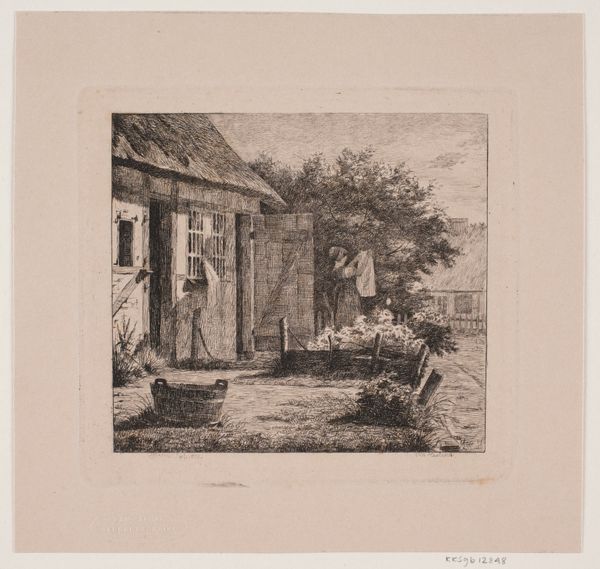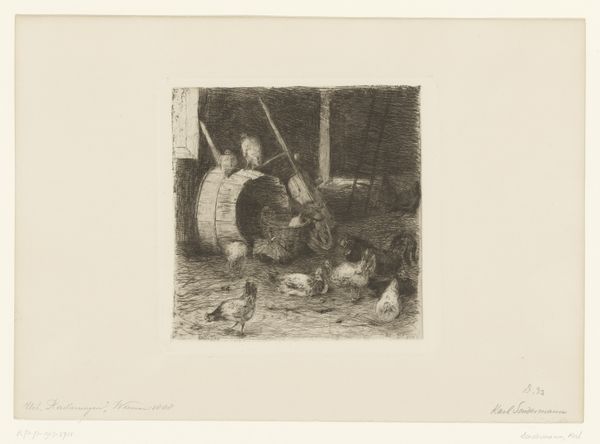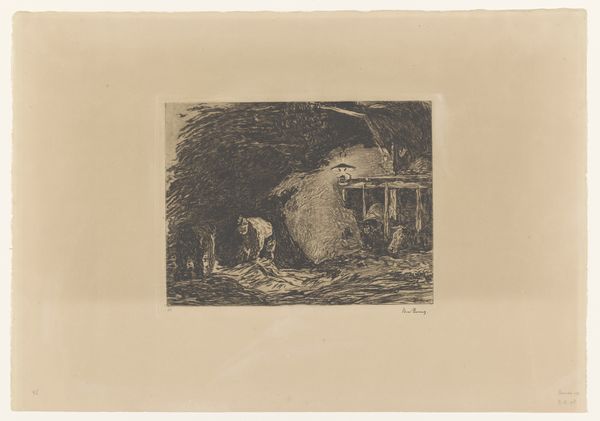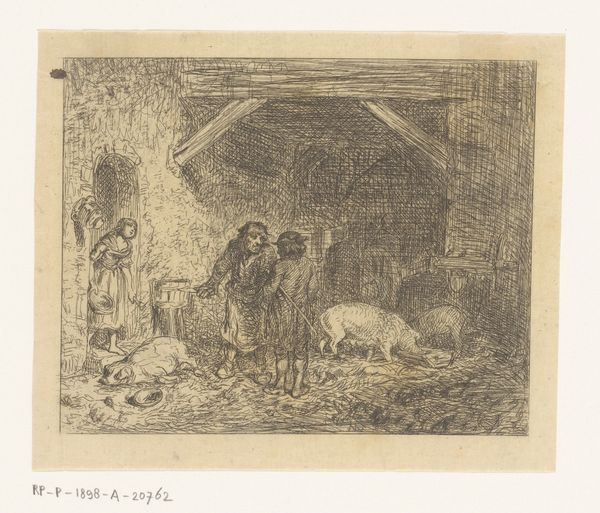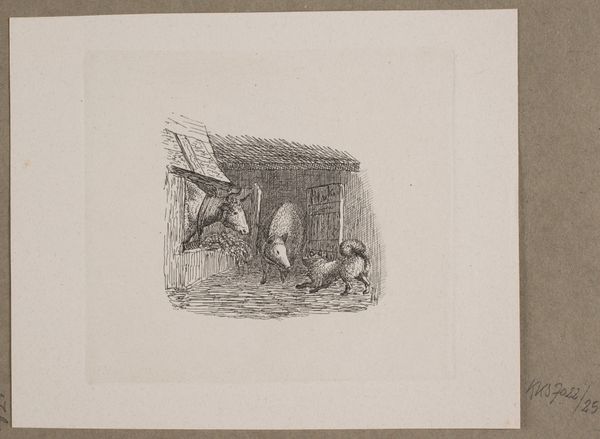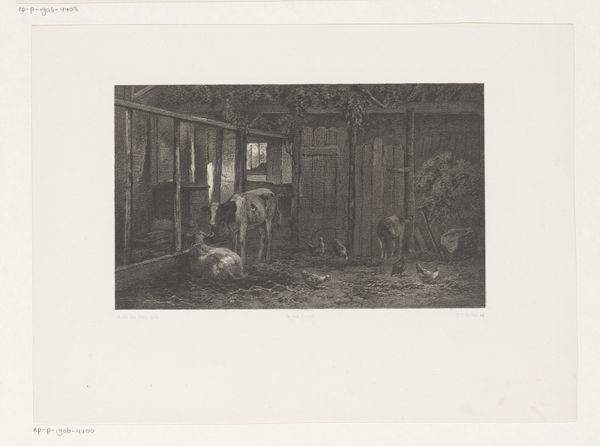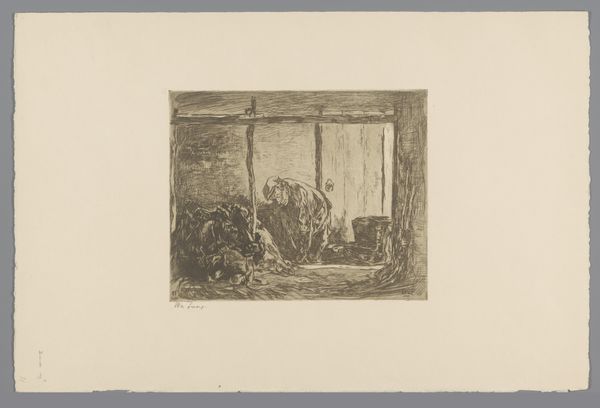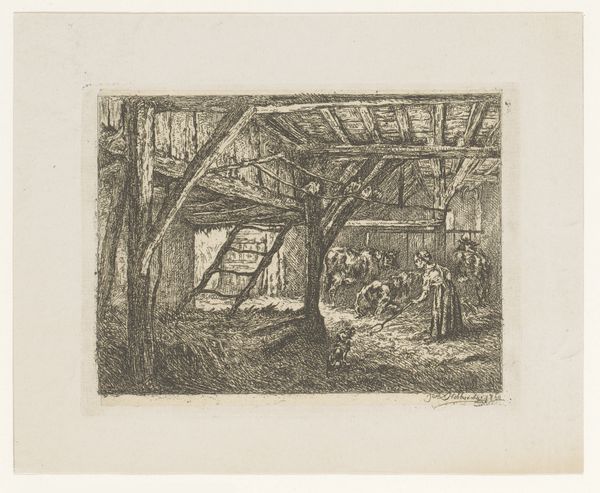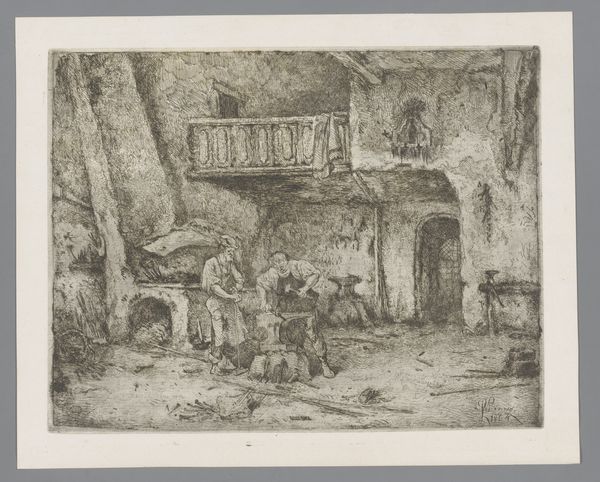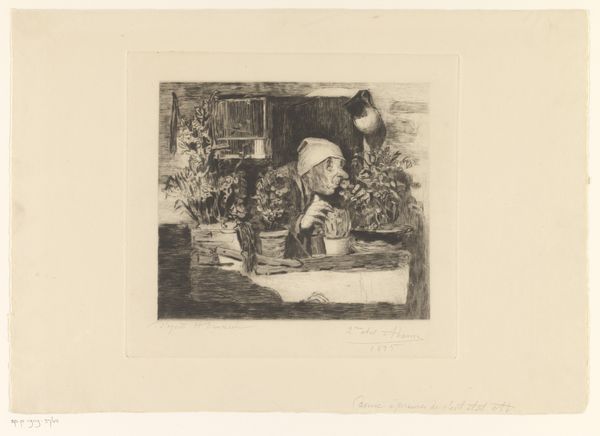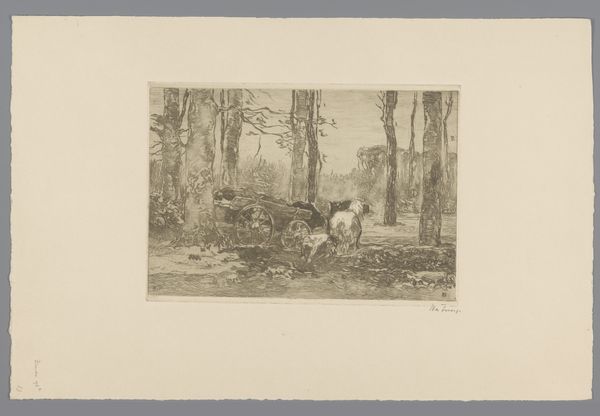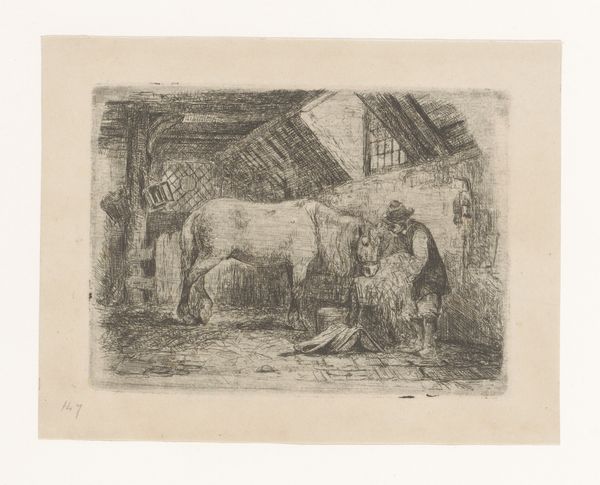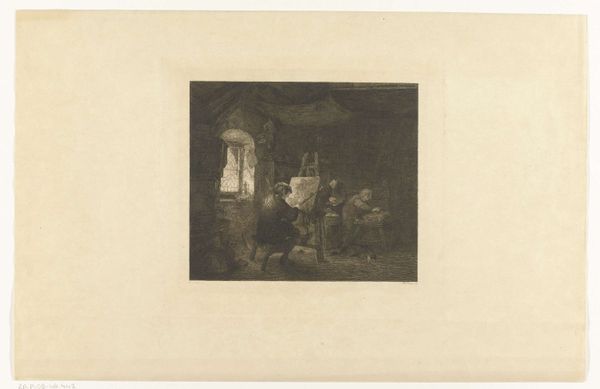
drawing, print, etching, paper
#
drawing
#
dutch-golden-age
# print
#
etching
#
landscape
#
paper
#
genre-painting
#
realism
Dimensions: height 118 mm, width 159 mm
Copyright: Rijks Museum: Open Domain
Editor: Here we have Willem van Vliet's "Vrouw met kalf", a drawing printed as an etching sometime between 1866 and 1924. It's such a simple scene, a woman with a calf. But the details are incredible for an etching. What story do you think it's telling? Curator: This work fits into the rise of Realism, which significantly impacted how genre paintings, like this one, were received. It turns away from idealizing rural life, a common theme in earlier art, towards portraying what many perceived as everyday reality. Do you see how the woman's labor is subtly depicted, not glorified? Editor: Yes, I do. It’s not romanticized. She looks like she’s just doing chores, like tending the calf is just part of her day. Curator: Exactly. Consider the social context: urbanization was rapidly changing Dutch society. Artists like van Vliet played a crucial role in visually documenting rural existence, preserving images of labor often unseen or ignored by urban elites. The etching itself, a relatively inexpensive medium, democratized access to such imagery. What do you think that accessibility did for the audience of the time? Editor: It probably allowed for broader viewership to scenes that weren't traditionally considered "art-worthy". It maybe created a greater sense of empathy, perhaps? Curator: Precisely. And perhaps a critical engagement with shifting societal values, where rural traditions faced displacement by urban modernization. The simple act of representing this woman and her calf elevates their mundane existence into a subject of artistic and social importance. Editor: That's fascinating! It makes you rethink how seemingly simple depictions can be deeply connected to major social currents. I’ll definitely view Realism in a new way going forward. Curator: Indeed, the art historical view gives us invaluable lessons for interpreting works of art.
Comments
No comments
Be the first to comment and join the conversation on the ultimate creative platform.
